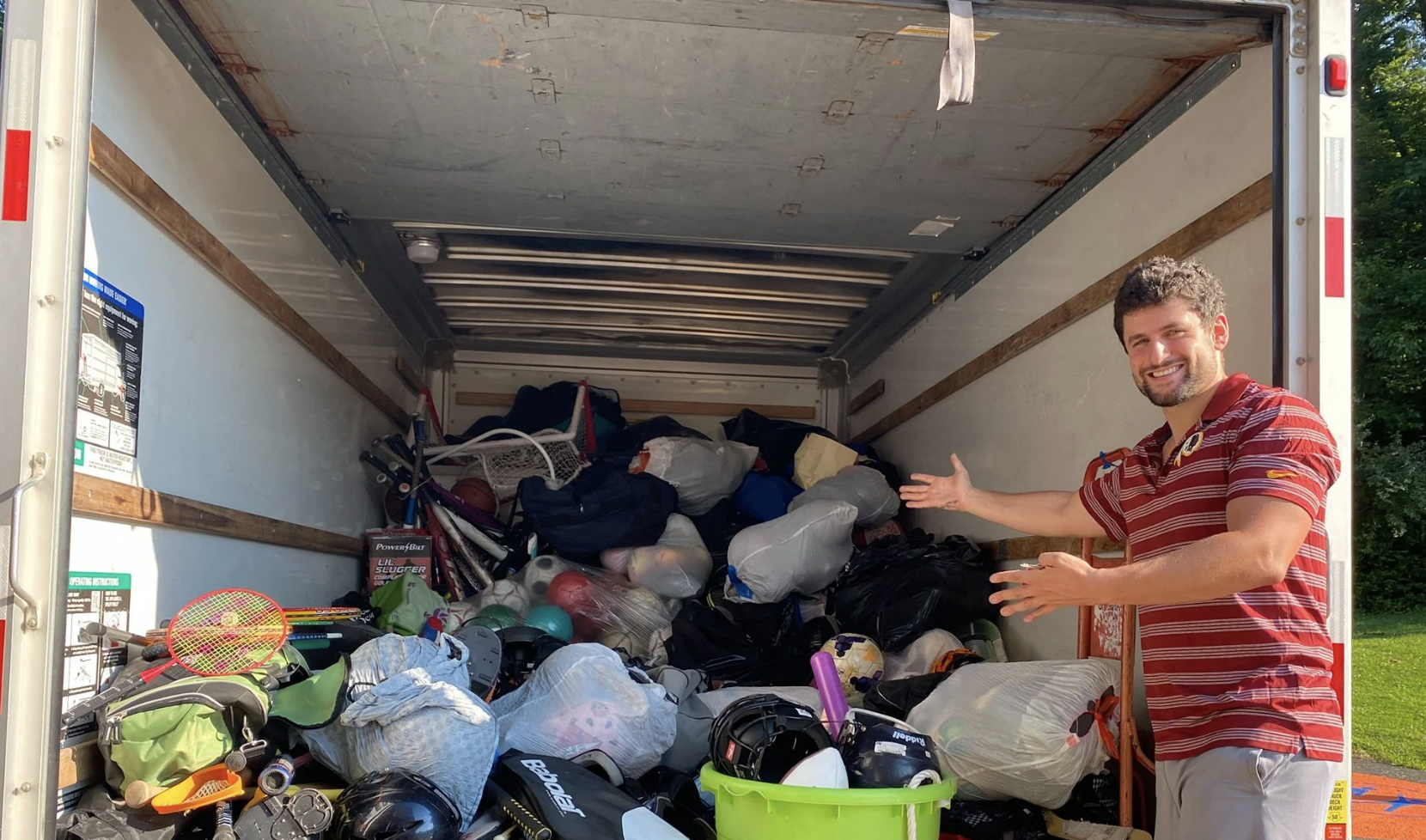Pause and pondr
WHY IS ACCESS TO YOUTH SPORTS SO LIMITED?
Sports can transform lives but many youth don’t have access because of a lack of inclusion, the cost of equipment and/or training. We look at what happens when adults intervene to give all kids a chance to practice inclusion, grow and learn important life skills through youth sports.
DID YOU KNOW?
Only 22% of kids ages 6 to 12 in households with annual incomes under $25,000 played sports on a regular basis, compared to 43% of kids from homes earning $100,000 or more. Source: The Aspen Institute
WHAT YOU’LL LEARN
Describe the challenges youth face when access to sports is limited
Understand the social, emotional, and physiological benefits of recreation
Recognize how communities implement creative solutions during a crisis
What did the pandemic expose in the world of youth sports?
Over recent decades, youth sports have become an increasingly privatized, exclusive space. The Covid-19 pandemic exposed existing barriers to youth recreation and propped up new ones that reflected some of the economic and social inequities in this country.
In low-income communities, park districts have reduced budgets for organized youth sports and schools have struggled to facilitate gym class virtually. For youth from low-income homes, the cost of sports led them to quit at six times the rate of those from high-income ones, according to research from the Aspen Institute and Utah State University.
During the pandemic, parents who could afford it enrolled children in clubs or formed travel teams that crossed county and state lines to make up for the lack of in-person school sports. Affluent communities and well-resourced school districts managed to navigate limited, in-person physical education with video e-training.
Even before the pandemic, parents like Jeremy Gocke see this inequity firsthand in his son’s traveling soccer league, where training fees and travel and lodging costs for tournaments can exceed $10,000 per year. He started the Crumb Foundation with his wife to provide scholarships for his son’s low-income teammates’ training fees, but families must still fundraise to pay for travel costs. “We’re hamstrung by the pay-to-play system,” Gocke says, adding that only skilled players whose families can afford it can participate.
The number of youth ages 6 to 12 who played team sports fell from 45% in 2008 to 38% in 2014, according to Sports & Industry Fitness Association data. By 2019, only around 23% of youth in households making under $25,000 played sports compared to 44% from households bringing in $100,000 or more in income.
How can access by improved?
During an audit last year, officials in Maryland’s Montgomery County found wealthier communities had more youth recreation spaces. The county council voted to invest $1.55 million to expand youth sports programs more equitably.
Jon Solomon of the Aspen Institute’s Sports & Society Program — which develops tools and research aimed at expanding access to youth sports — applauds the vote. He says more municipalities need to make investments to close opportunity gaps.
Aspen Institute research shows that during the pandemic, a child from a household making $100,000 or more spends roughly two hours more on sports each week than a child in a household bringing in under $50,000. The gap was narrower before the pandemic.
“We need to get back, in this country, to an affordable, community-based youth sports model,” Solomon says.
A 2019 RAND study suggests community organizations, foundations and local political entities could help subsidize youth sports by negotiating field and equipment sharing along with providing stipends to cover facility rentals or gear expenses. The authors also suggest providing free or low-cost coaching training for people committed to youth fitness and to encourage young people to try out multiple sports and fitness programs to boost their confidence with physical coordination and to engage in skill-building activities.
Pondr This
Did you play any sports as a child or teen, and what benefits, if any, did you derive from doing so? If not, do you think there were benefits you missed? Was cost ever a factor?
Have you ever volunteered in youth sports? If so, what was your experience like?
Where in your community can youth play team sports or develop a fitness routine? What are these places like?
FOR LEADERS
Did you take part in sports when you were growing up?
There are many correlations made between sports and leadership skills. Do you think there is validity in those connections?
Does your organization or company participate in any intramural sports leagues or sports-related events?
Explore The Stories
access to youth sports: A toolkit
GOLFER WORKS TO BROADEN HER SPORT’S REACH
FREE SPORTS EQUIPMENT HELPS LOW-INCOME KIDS GET IN THE GAME
Topic in Review
For this Pause and Pondr, we delved into the world of youth sports. Participation in youth sports has been declining and costs have been rising, making it prohibitive for many American families to have their kids participate. But the benefits are clear for youth, including crucial tools such as instilling the values of leadership and teamwork.
Continue Your Journey
Here are some key organizations around the country that are working to level the playing field that you may be able to support.
LA84 Foundation has served over 3.9 million children in Southern California since it began in 1985 as a grantmaking and educational foundation — it supports hundreds of nonprofit youth sports organizations each year, trains coaches and commissions research.
Good Sports’ mission is to give disadvantaged kids equipment, apparel and footwear to disadvantaged youth. The organization was founded in 2003 in Boston, Massachusetts, and has distributed more than $60 million in sporting equipment since their inception, impacting more than 8 million kids across the country. They have partnered with professional sports teams and leagues as well as organizations like the Boys & Girls Club.
Play It Foward was begun by Emmi Eisner when she was only 12 years old. She first collected new and used sporting equipment from friends and family and schoolmates and delivered gear to a Pacoima, California elementary school. Now it’s donated gear to over 110 schools and served 80,000 children. Meanwhile, Oregon-based Every Kid Sports allows families to apply for up to $150 four times a year to cover fees for after-school sports.
Finally, King County Play Equity Coalition is a network of organizations in the Washington area that seeks to address barriers for outdoor play areas that affect youth of color, immigrants, low-income families and youth with disabilities.





